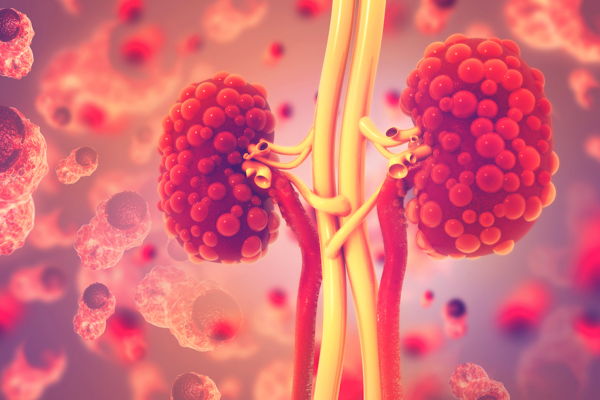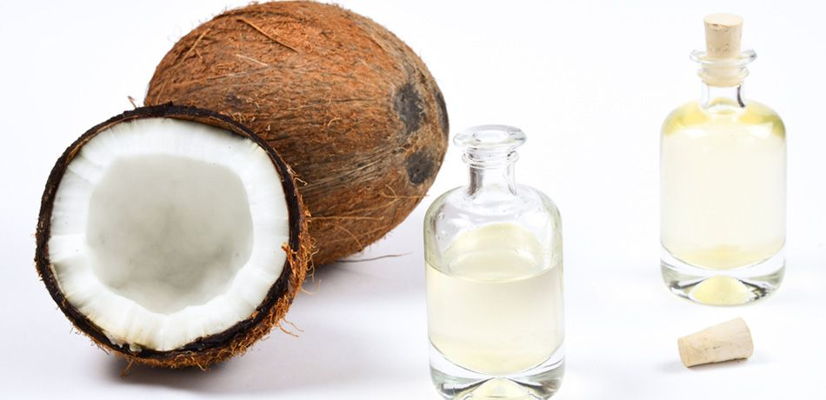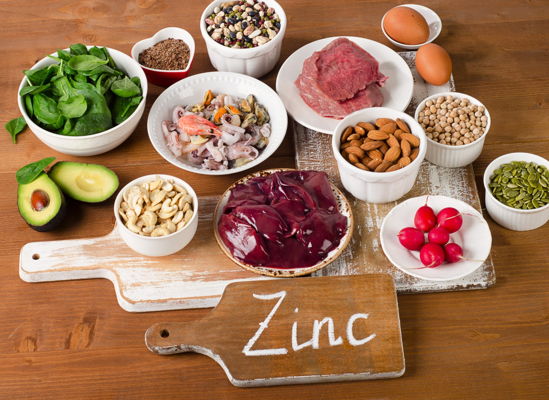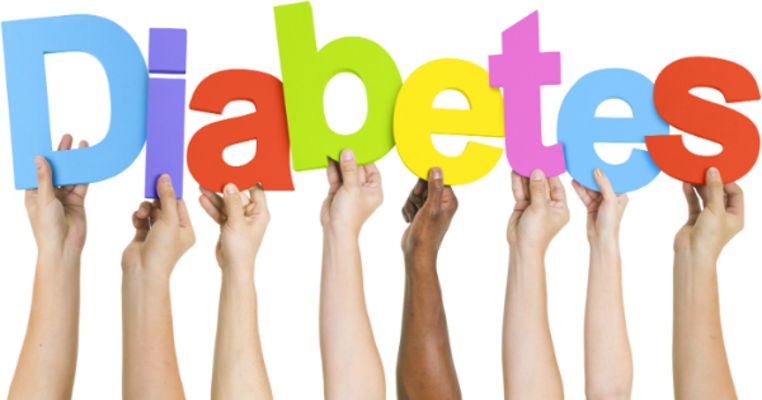12 Causes and Remedies for Constant Bloating
Wednesday May 30, 2018 by Marianne Gutierrez 2,283 words
1. Sugars in Foods
The sugars in foods are called Oligosaccharides, Disaccharides, Monosaccharides and Polyols hence the term FODMAP.
These saccharides are various sugars found in vegetables and fruits that some people cannot absorb due to the lack of the enzymes: salivary amylase, pancreatic amylase and maltose necessary for their digestion. The saccharides naturally attract water to themselves and then travel to the large intestine undigested (due to the lack of digestive enzymes) where fermentation takes place, which then bloats the abdomen causing causing gurgling, gas and diarrhea.
There are some prebiotic supplements that contain some of these sugars that will also bloat the gut if you do not have enough of the enzymes to digest them. They are also found as additives in manufactured foods.
To reduce the symptoms, avoid the additives and chew food for longer to release the enzyme amylase that breaks down the sugars in carbohydrates; also introduce a reduced FODMAP diet but not cutting out vegetables and fruits altogether.
Digestion is the mechanical and chemical break down of food into small organic fragments. It is important to break down macromolecules into smaller fragments that are of suitable size for absorption across the digestive epithelium. Large, complex molecules of proteins, polysaccharides, and lipids must be reduced to simpler particles such as simple sugar before they can be absorbed by the digestive epithelial cells.
mkldesigns / shutterstock.com
2. Enteric Nervous System
The Enteric Nervous System (ENS) begins in the brain stem and continues along the length of the gastrointestinal tract from the mouth and through to the anus, it is a complex mesh of nerves.
It is composed of an enormous number of neurons to control its many functions that can operate independently depending on their reflexes.
The nerves involved in this system help the ENS with its motor functions, blood flow, mucosal transport and secretions that digest and move food along its passage absorbing nutrients and getting rid of waste.
Thoughts in the brain can trigger the gut wall to respond positively or negatively. They are one reason why the gut is affected when situations cause us to be anxious or nervous. Conversely, when the gut is upset either by stress or foods causing inflammation, the brain is triggered to respond negatively causing depression and anxiousness.
Bloating is one symptom caused by the gut when it is not working optimally. To help the gut manage bloating, consume a diet of good quality foods with less sugars. Introduce calming practices during your day by going for a walk, enjoying the views, stroking animals, walking barefoot on the grass, making regular ‘me’ time, having a massage or writing your worries down somewhere safe – this is cathartic and helps to take the worry out of your brain.
The neurons in the gut wall include local and centrally projecting sensory neurons that monitor mechanical and chemical conditions in the gut, local circuit neurons that integrate this information, and motor neurons that influence the activity of the smooth muscles in the wall of the gut and glandular secretions (e.g., of digestive enzymes, mucus, stomach acid, and bile). This complex arrangement of nerve cells intrinsic to the gut is organized into: (1) the myenteric (or Auerbach’s) plexus, which is specifically concerned with regulating the musculature of the gut; and (2) the submucus (or Meissner’s) plexus, which is located, as the name implies, just beneath the mucus membranes of the gut and is concerned with chemical monitoring and glandular secretion.
Perception 7 / shutterstock.com
3. Milk Intolerance
Several foods can upset the gut if the enzymes that break the food down for absorption are not present or are in short supply. One of those upsetting foods is milk. Milk contains lactose that needs lactase to be broken down for digestion and absorption.
Milk, when the cows are fed a fully nutritious grass fed diet, should naturally contain lactase. Therefore, within the milk itself are the enzymes to break it down. What destroys lactase is the pasteurization process. Pasteurization was introduced by Louis Pasteur in 1864 to improve the qualities of wine. The process was used on milk in the late 1800s to destroy the TB bacteria. TB was found in milk, because back then farms were not hygienic. Therefore today, there is probably no reason to continue to pasteurize milk.
We naturally carry the lactase enzyme in our guts from birth, which we get from our mothers if they are able to breastfeed and have been able to consume good quality raw milk.
When lactose is not fully digested gut bloating, pain and diarrhea can result.
Raw milk is fast becoming the number one hot food topic and has emerged as a high priority health food in America. This defiant grass roots movement is fueled by the truth and the internet. People need and want clean raw milk that is produced in organic, grass-fed conditions. Raw milk retains its enzymes, good grass-fed fats, and wonderful, bio-diverse, immune system-rebuilding beneficial bacteria, and works wonders for the depressed immune system of the common American. Raw milk changes and saves lives.
Albina Glisic / shutterstock.com
4. Coeliac Disease
Even though coeliac disease was first recorded 8,000 years ago, the wheat then was vastly different to the wheat we consume nowadays. Today, wheat has undergone hybridization and has had gluten added to it, not to mention all the pesticides and herbicides that are now used. The way we consume grains is different too. Centuries ago the harsh outer fiber was removed and the resulting grain was fermented to help break down phytic acid which most guts cannot tolerate. Today, we are told to eat the bran and the grain is not fermented.
In its over 8000-year history as a domesticated food, wheat continues to be the major grain consumed by humans, although it has not been the same wheat for all of those many centuries. Modern wheat has had a very long history of hybridization, starting with ancestral grasses in the wild and also occurring naturally in farmers’ fields in antiquity. Humans have continued the process chemically in the last century, and especially during the last 50 years in order to increase yields, resist fungal diseases and pest attacks, improve ease of mechanical harvesting and meet rigorous demands of industrial milling and mechanized baking methods.
Symptoms of coeliac disease are: gut pain, excessive wind, bloating, diarrhoea and lethargy, anaemia, mouth ulcers, skin rashes among others.
corbac40 / shutterstock.com
5. Non-Coeliac Gluten-sensitivity
Coeliac disease is tested by a blood test and biopsy. In non-coeliac gluten-sensitivity, all the symptoms of coeliac disease are experienced, but the blood test and biopsy are returned normal.
Non-coeliacs will need to avoid wheat, rye and barley, and also corn as a protein in corn can mimic gluten. Oats are also easily contaminated with gluten and may also need to be avoided.
In some CD patients, as a rare event, peptides from maize prolamins could induce a celiac-like immune response by similar or alternative pathogenic mechanisms to those used by wheat gluten peptides. This is supported by several shared features between wheat and maize prolamins and by some experimental results.
Oksancia / shutterstock.com
6. Constipation
The harsh, insoluble fiber in the diet can cause constipation, or slow movement in the bowel, which can lead to pain and bloating. Fiber can make the stools hard and impacted. Fiber is not easily digested and can harm the bowel wall. What encourages good bowel movement are the soluble fibers found in vegetables, as they absorb water and provide a gluey texture. Sea or rock salt helps as it brings more water to the stools making them softer, while animal fats help with lubrication and passing the stools. A popular medication for people who experience constipation contains mineral oil and sodium, which acts as a lubricant using sodium to swell and soften the stools. A better alternative would be to eat good quality salted butter which will provide nutrients for the brain and nerves, as well as reduce constipation. Other products that help are psyllium husks or slippery elm.
You might be surprised to find out that the original intent behind fiber consumption wasn‘t the betterment of your health, but the suppression of sexuality! As this book explains, fiber has indeed succeeded at rendering a great many men and women sexually dysfunctional. That’s why just a generation ago, avoiding fiber was the quintessence of prudent nutrition. Caring parents everywhere, American and European alike, were earnestly peeling fruits (apples, peaches, pears, prunes) and skinning vegetables (tomatoes, peppers, eggplant, potatoes) before giving them to children or eating them themselves. The French and Italians still do it. And the Japanese diet is practically fiber-free. Americans, on the other hand, are urged to consume 30 to 40 grams of dietary fiber daily, regardless of their age and health.
Emily Frost / shutterstock.com
7. Small Intestinal Bacterial Overgrowth (SIBO)
As the name suggests, SIBO is a condition in which there is too much bacteria found in the small intestine. SIBO can cause diarrhea, bloating, gut pain and weight loss including poor nutritional uptake.
Small intestinal bacterial overgrowth (SIBO) is defined as the presence of excessive bacteria in the small intestine. SIBO is frequently implicated as the cause of chronic diarrhea and malabsorption. Patients with SIBO may also suffer from unintentional weight loss, nutritional deficiencies, and osteoporosis.
Olena758 / shutterstock.com
8. Bile Acid Diarrhea
Bile acid diarrhea occurs when there is small intestine bacterial overgrowth (SIBO), coeliac disease, pancreatitis or if there has been an ileal re-section or ileal inflammation or cholecystectomy. The symptoms of bile acid malabsorption are diarrhea and bloating, but to ascertain a bile acid problem SeHCAT scans are prescribed.
Bile acid diarrhea (BAD) is an under-diagnosed condition producing diarrhea, urgency and fear of fecal incontinence.
Treetree / shutterstock.com
9. Ovarian Cancer
It was originally thought that ovarian cancer did not produce many symptoms, but now symptoms are seen as: abdominal bloating, indigestion or nausea, changes in appetite such as a loss of appetite or feeling full sooner, pressure in the pelvis or lower back, a more frequent or urgent need to urinate and/or constipation, changes in bowel movements, increased abdominal girth, tiredness or low energy, and/or changes in menstruation. However, any of these symptoms could be caused by another condition. The charity ‘Target Ovarian Cancer’ is highlighting bloating as a common symptom of ovarian cancer because alarmingly 14,000 women die each year from this disease. Therefore, if you have bloating, you should see your Medical Practitioner to rule out ovarian cancer.
Ovarian cancer does have symptoms, but they are often very subtle and easily mistaken for other, more common problems. In some rare cases, early stage ovarian cancers may produce symptoms, but in the majority of women these don’t show up until the cancer has advanced (when the growth of the tumor triggers symptoms). Several studies show that ovarian cancer can produce these symptoms: bloating, pelvic or abdominal pain, difficulty eating or feeling full quickly, and/ or urinary symptoms (urgency or frequency).
Photographee.eu / shutterstock.com
10. Your Eating Habits
Chewing with your mouth open, eating too fast, lack of chewing, and swallowing lumps of food can all cause air to get trapped in the stomach and intestines which causes bloating. Poor chewing results in less amylase being produced, an enzyme that breaks down carbohydrates in the mouth and again when the food leaves the stomach.
Saliva contains digestive enzymes, so the longer you chew, the more time these enzymes have to start breaking down your food, making digestion easier on your stomach and small intestine. One of these enzymes is lingual lipase, an enzyme that helps break down fats, for example. Saliva also helps to lubricate your food so it’s easier on your esophagus.
AJR_Photo / shutterstock.com
11. The Activated Charcoal Remedy
Activated charcoal reduces gas in the abdomen, which reduces pain. Braggs is the only company licensed to produce activated (or medical) charcoal.
Activated charcoal’s effects work in the stomach through to digestion in the intestines, acting like a sponge absorbing substances that upset the digestive tract.
Activated charcoal cannot alter the chemistry of the body or adhere to nutrients, minerals or supplements. A honeycomb lattice opens up during the charcoal steam purification process which creates a large surface area for absorption of toxins which bond by electromagnetic force, and are then carried safely through digestion for elimination.
Clinical research has not found that activated charcoal absorbs vitamins or minerals from food. You can use activated charcoal during pregnancy and during lactation to reduce the symptoms of dyspepsia, wind, bloating, belching, nausea and heartburn. It has been used for many years for the treatment of intestinal disorders.
Activated charcoal has been used for centuries to treat everything from poisoning to common digestive disorders. Over the years we have gained a much better understanding of how it works and why so many people rely on its medicinal benefits. In simple terms, activated charcoal acts like a sponge, working its way through the body and adsorbing substances that can cause harm or irritation to the digestive system.
andasea / shutterstock.com
12. Exercise
Toning the abdominal muscles will help peristalsis and movement of the feces through the gut, and will reduce sluggishness of the stools and gut bloat. Toning of the abdominals will also reduce the ability of the abdominal wall to sag. General exercise, for example a walk every day, will also help digestion due to the increase of blood and oxygen to the vital areas for digestion.
Tyler Olson / shutterstock.com

16 Warning Signs of Lupus to Watch Out For
1. Unexplained Fever Lupus can affect everyone differently and some may have …


21 Features of Kidney Disease
1. Dizziness Kidney Disease is when the kidneys are not filtering blood …


Top 10 Foods to Nourish Your Thyroid
Did you know that the food you eat can affect your thyroid health? Some foods …


12 Facts About Your Borderline Personality …
1. It's Finally Classified As a Mental Illness Borderline Personality Disorder, …


12 Common Factors That Trigger Rosacea …
1. Makeup Some products used on the face and body or in the mouth ie: make-up, …


22 Common Symptoms of Type II Diabetes
1. Mood Changes Mood change is sometimes one of the first symptoms to suggest …
